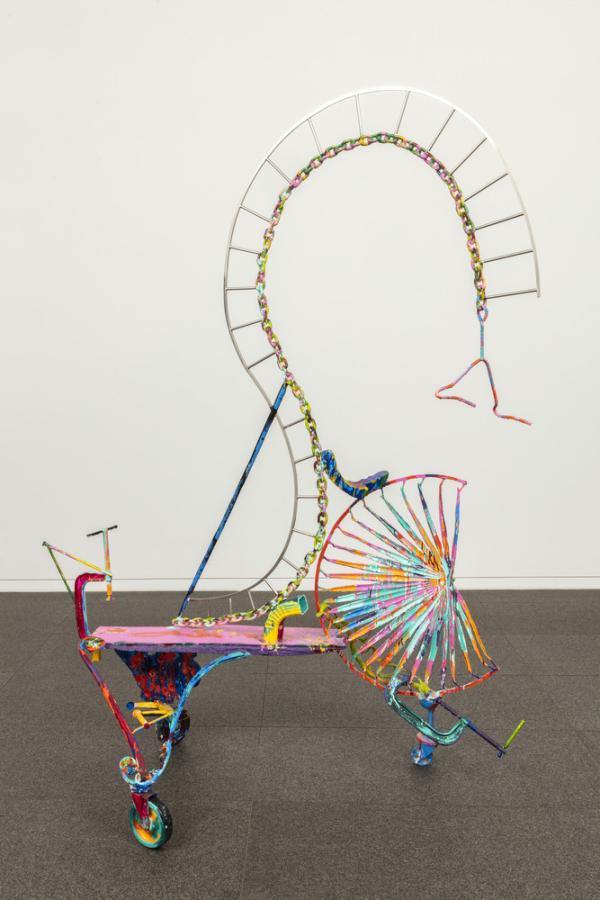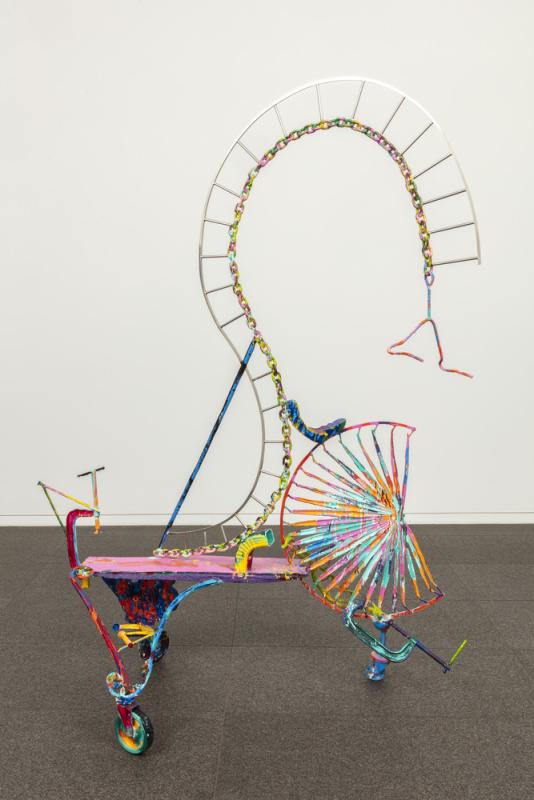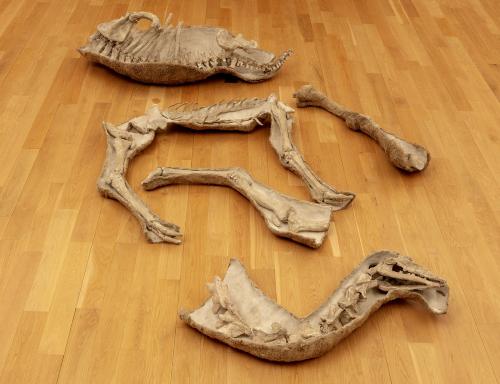Skip to main content
Wheelabout
Artist
Nancy Graves
(Born 1939, United States; died 1995, United States)
Date1985
MediumBronze and stainless steel with polyurethane paint
DimensionsOverall: 92 3/4 x 70 x 31 1/2 in. (235.59 x 177.8 x 80.01 cm)
Credit LineCollection of the Modern Art Museum of Fort Worth, Gift of Anne H. Bass and Sid R. Bass
Object number1985.36
Status
On viewSignedinscribed on diagonal pole approximately 40" high "WHEELABOUT N.S. GRAVES 85"
Copyright© Nancy Graves Foundation
Category
Label TextNancy Graves established herself as an artist in the late 1960s with an exhibition of realistic, life-size camels. Fabricated out of wood, steel, burlap, polyurethane, animal hide, wax, and oil paint, these sculptures appeared to be taken directly from a natural history museum, and they asserted the artist’s interest in science and history. Graves returned to sculpture in the 1980s after a hiatus dedicated to painting, still interested in science and nature but far from her camels of the late 1960s.
In Wheelabout, 1985, Graves combines shapes and forms found in nature with objects found in everyday life. Her interest in natural science is manifested through cast, organic materials. There is a strong affinity with the Pop art movement of the 1960s in her whimsical combination of ordinary objects, such as cast plants, molten bronze spills, C-clamps, and drain spouts. The composition’s large, continuous curves, recognizable yet unrelated objects, and bright colors give it a playful appearance. The three wheels relate to that playful spirit, and the spoke-like palm fronds bring to mind the form of a tricycle, emphasizing a sense of movement.
The formal elements of Wheelabout are repeated and balanced throughout the piece. The S curve that dominates the upper half is balanced by smaller curves, and this is again echoed in the two supports of one of the wheels, on which are welded small organic forms that further reinforce the repeated shape. The contrast between rigid, straight lines and fluid, sweeping curves give this assemblage of seemingly incongruent materials a sense of harmony and balance.
In Wheelabout, 1985, Graves combines shapes and forms found in nature with objects found in everyday life. Her interest in natural science is manifested through cast, organic materials. There is a strong affinity with the Pop art movement of the 1960s in her whimsical combination of ordinary objects, such as cast plants, molten bronze spills, C-clamps, and drain spouts. The composition’s large, continuous curves, recognizable yet unrelated objects, and bright colors give it a playful appearance. The three wheels relate to that playful spirit, and the spoke-like palm fronds bring to mind the form of a tricycle, emphasizing a sense of movement.
The formal elements of Wheelabout are repeated and balanced throughout the piece. The S curve that dominates the upper half is balanced by smaller curves, and this is again echoed in the two supports of one of the wheels, on which are welded small organic forms that further reinforce the repeated shape. The contrast between rigid, straight lines and fluid, sweeping curves give this assemblage of seemingly incongruent materials a sense of harmony and balance.









